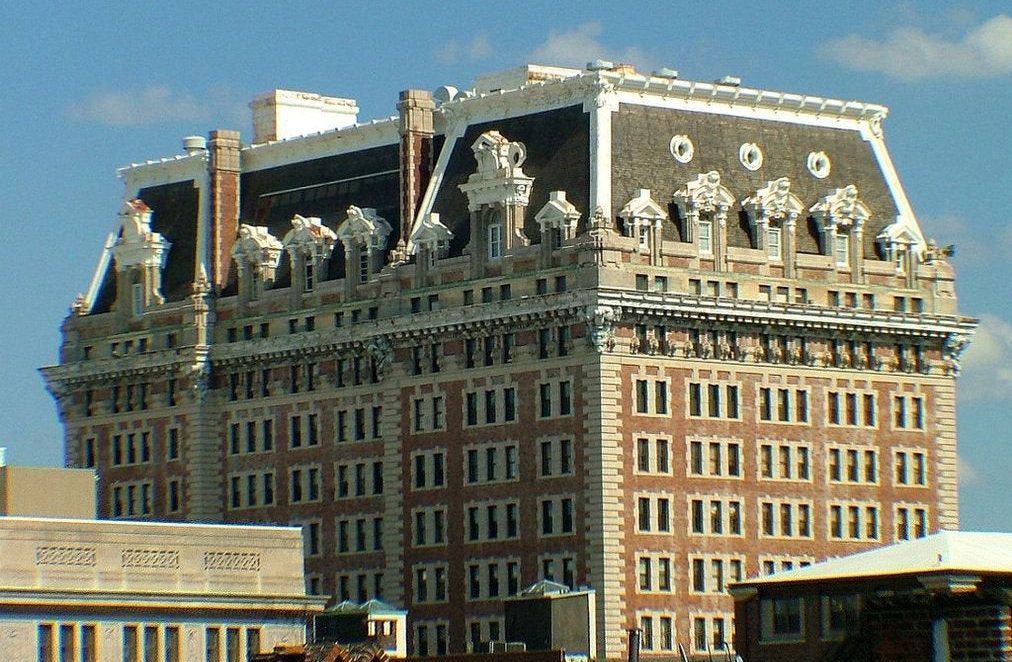The Baltimore Architecture Foundation is celebrating the history of AIA Baltimore in its 150th year by publishing select histories and highlights of Baltimore architecture from 1870 all the way through the 2000’s. These unique selections were written and edited by Charlie Duff.

H.L. Mencken called this decade “the reign of Roosevelt the First”, and the architecture of the period shows the bursting energy, the patrician refinement and the bellicose nationalism that we associate with the Rough Rider. Continuous prosperity kept architects busy, and the Baltimore Fire of 1904 ensured that the architecture of this decade would stamp the image of downtown for half a century.
Baltimore’s Victorian architects faded, and new firms with young principals vigorously stamped out the last embers of medievalism and eclecticism. The best example was Douglas Thomas, who returned from the Ecole des Beaux Arts in 1901 and immediately established the primacy of his firm, Parker & Thomas.
It was in this decade that the Middle Ages finally ceased to be a major source of architectural inspiration. St. David’s Episcopal Church in Roland Park (Ellicott & Emmart, 1906) was the first non-medieval sanctuary built in Baltimore since the Civil War. Architects favored burly versions of the Colonial Revival and the French Beaux Arts traditions, and often fused the two to produce an original architecture.
Downtown, destroyed in 1904, was completely rebuilt within two years. Architects flocked in from all over the country. The B&O Railroad built the best skyscraper of the decade (Parker & Thomas, 1906). Most business buildings, however, were still small, like the fire-surviving Alex. Brown (Parker & Thomas, 1901). The Savings Bank of Baltimore (Parker & Thomas, 1907) showcased the marvelous craftsmanship still available in this decade.
No new row houses were built for the rich, but middle-class families filled the new rows of Charles Village and Auchentoroly Terrace. A curious confusion of urban and suburban reigned there: some blocks looked like Bolton Hill in the 1860s, with flat fronts and marble steps; other blocks sported porches and pinnacles. Mount Vernon gained two great buildings, both very French: the Hotel Belvedere (Parker and Thomas, 1903) and the Washington Apartments (Edward Glidden, 1906).
In the suburbs, the Olmsteds turned a wooded hillside into the west side of Roland Park, and Baltimore’s architects seeded this ground with most of the decade’s notable houses. As the suburbs ceased to be summer resorts, shingle yielded to masonry, whimsy to the decorum of the ancients. Porches moved from front to side. Parker & Thomas designed a whole suburban campus for the Johns Hopkins University; characteristically, all new buildings derived from the design of Homewood House (1800).


